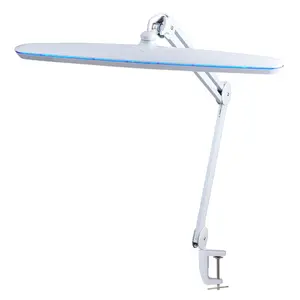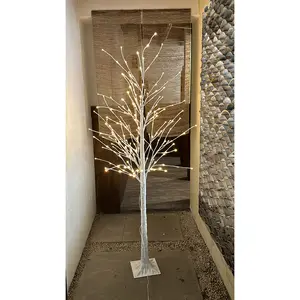Exploring the Versatility of Design Lamps
Design lamps are not merely functional items but also pivotal elements of interior design. These lighting fixtures serve as focal points in any space, from kitchen pendant lighting to bathroom light ceiling installations. The variety of materials used in their construction, such as cut glass, wood, wrought iron, and ceramics, allows for a diverse range of styles and expressions.
The Artistry of Light: Features and Materials
The craftsmanship of a design lamp can be seen in the intricate details of a flos lamp or the organic shapes of a noguchi lamp. These pieces are not just sources of light but are sculptural works that can transform the ambiance of a room. The materials chosen for each lamp are essential not only for style but also for the quality of light diffused. A wood floor lamp might emit a warm glow, while a gold light ceiling fixture could offer a soft, reflective illumination.
Functionality Meets Elegance in Lighting
When selecting a design lamp, functionality should harmonize with aesthetic appeal. For instance, island kitchen pendant lighting is designed to provide ample light for cooking tasks while also enhancing the kitchen's overall design. Similarly, a flush light ceiling fixture is an excellent choice for areas with lower ceilings, where it provides necessary lighting without compromising on style.
Design Lamps in Various Settings
The adaptability of design lamps means they can be integrated into any room. A tripod floor lamp can become a statement piece in a living room, while a louis poulsen ph5 can add mid-century modern flair to a dining area. In commercial spaces, the right lighting can elevate the environment, making a monkey lamp or an akari lamp intriguing conversation starters.
Considerations for Choosing the Right Lamp
Selecting the perfect design lamp requires consideration of several factors. The size of the lamp should be in proportion to the space, ensuring it complements rather than overwhelms the room. Ceiling height is another critical factor, as it influences the type of lamp—whether a bold flowerpot lamp or a subtle wall light design—that will harmonize with the room's proportions. Maintenance is also a practical aspect to consider, as some designs may require more frequent cleaning to preserve their beauty and functionality.
Conclusion: The Impact of Design Lamps
In conclusion, a design lamp is more than just a light source; it's a piece of art that reflects personal style and enhances the functionality of a space. Whether it's through the sleek lines of a flos lights installation or the natural elegance of a noguchi light, these lamps are integral components of interior design that offer both beauty and practicality.






































 浙公网安备 33010002000092号
浙公网安备 33010002000092号 浙B2-20120091-4
浙B2-20120091-4